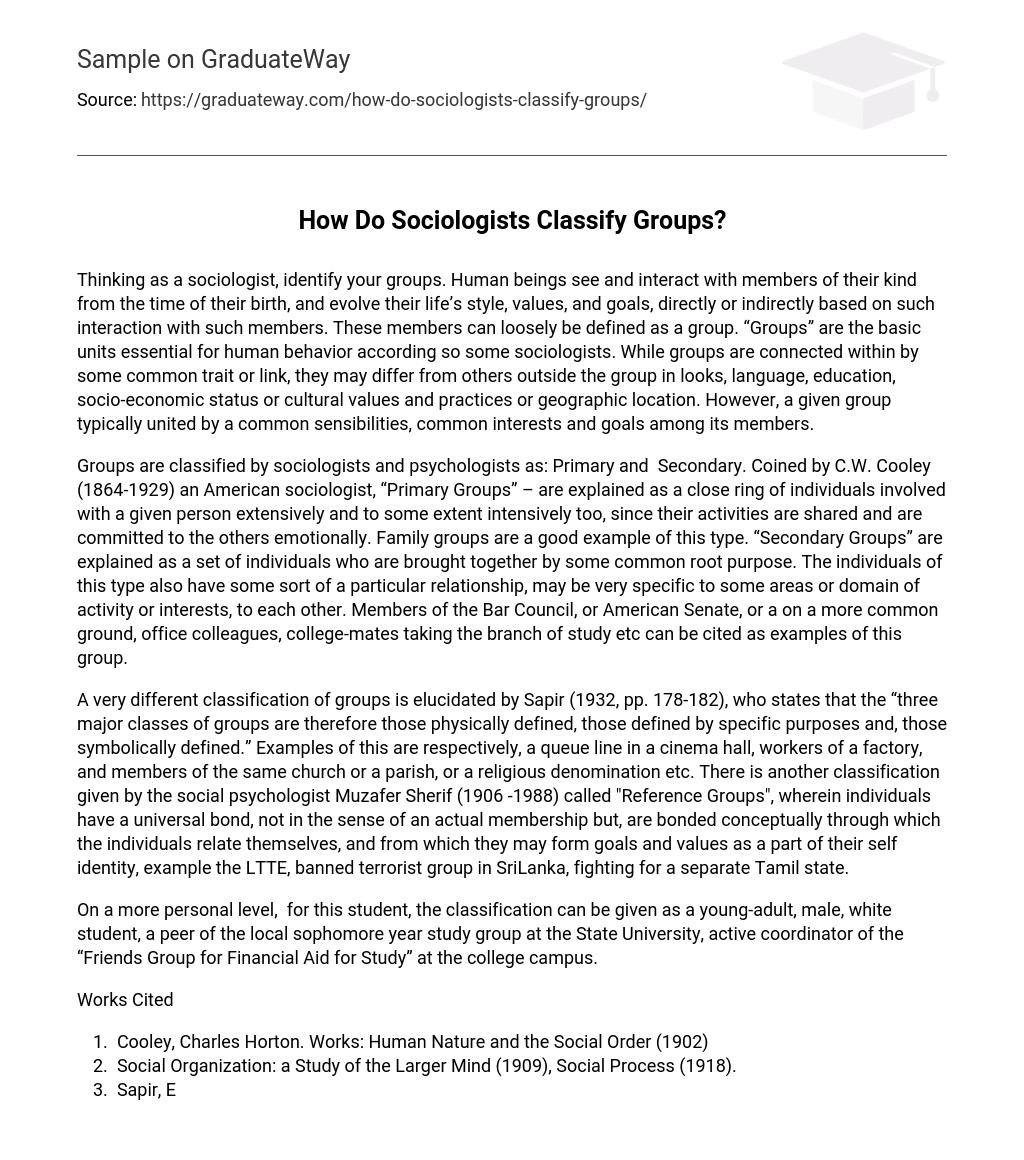Thinking as a sociologist, identify your groups. Human beings see and interact with members of their kind from the time of their birth, and evolve their life’s style, values, and goals, directly or indirectly based on such interaction with such members. These members can loosely be defined as a group. “Groups” are the basic units essential for human behavior according so some sociologists. While groups are connected within by some common trait or link, they may differ from others outside the group in looks, language, education, socio-economic status or cultural values and practices or geographic location. However, a given group typically united by a common sensibilities, common interests and goals among its members.
Groups are classified by sociologists and psychologists as: Primary and Secondary. Coined by C.W. Cooley (1864-1929) an American sociologist, “Primary Groups” – are explained as a close ring of individuals involved with a given person extensively and to some extent intensively too, since their activities are shared and are committed to the others emotionally. Family groups are a good example of this type. “Secondary Groups” are explained as a set of individuals who are brought together by some common root purpose. The individuals of this type also have some sort of a particular relationship, may be very specific to some areas or domain of activity or interests, to each other. Members of the Bar Council, or American Senate, or a on a more common ground, office colleagues, college-mates taking the branch of study etc can be cited as examples of this group.
A very different classification of groups is elucidated by Sapir (1932, pp. 178-182), who states that the “three major classes of groups are therefore those physically defined, those defined by specific purposes and, those symbolically defined.” Examples of this are respectively, a queue line in a cinema hall, workers of a factory, and members of the same church or a parish, or a religious denomination etc. There is another classification given by the social psychologist Muzafer Sherif (1906 -1988) called “Reference Groups”, wherein individuals have a universal bond, not in the sense of an actual membership but, are bonded conceptually through which the individuals relate themselves, and from which they may form goals and values as a part of their self identity, example the LTTE, banned terrorist group in SriLanka, fighting for a separate Tamil state.
On a more personal level, for this student, the classification can be given as a young-adult, male, white student, a peer of the local sophomore year study group at the State University, active coordinator of the “Friends Group for Financial Aid for Study” at the college campus.
Works Cited
- Cooley, Charles Horton. Works: Human Nature and the Social Order (1902)
- Social Organization: a Study of the Larger Mind (1909), Social Process (1918).
- Sapir, Edward. “Group,” Encyclopaedia of the Social Sciences. New York, 7 (1932): 178-182.
- Website http://spartan.ac.brocku.ca/~lward/Sapir/Sapir_1932_a.html accessed on July 2, 2006.
- Sherif, Muzafer. “Superordinate Goals in the Reduction of Intergroup Conflict,”American
- Journal of Sociology, 63 (1958): 349-358.





